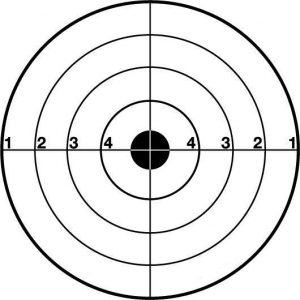Course Syllabus

SYLLABUS - U.S. HISTORY
 |
I can meet the expectations for this class in order to be successful |
|
Syllabus: noun, plural syl·la·bus·es, syl·la·bi [sil-uh-bahy]
|
|
INTRODUCTION Welcome Students and Parents to 8th Grade U.S. History! The goal of this course is to tell the story of the first half of our Nation's history; from the arrival of the First Americans through the Civil War. Along the way we will analyze the driving factors that shaped this era, such as key people, events, and ideas. Hopefully, by the end of this year each student will have developed their appreciation for the story of how the United States became what it is today, and … what you may help it become tomorrow! |
|
COURSE OUTLINE These are the ten Units we will cover this year in class, along with the corresponding Chapters from our textbook. The Standards explain what students will learn in each Unit and demonstrate on each final Test. |
|
UNIT 1: Geography STANDARD: Interpret the role of Geography in shaping United States History
|
|
UNIT 2: Exploring the New World STANDARD: Understand the changes caused by European discovery of America
|
|
UNIT 3: The English Colonies STANDARD: Analyze European settlement and colonization of North America
|
|
UNIT 4: Road to Revolution STANDARD: Analyze what ideas and events led to the Revolutionary movement
|
|
UNIT 5: The Revolutionary War STANDARD: Understand how the Americans won and the lasting results of the war
|
|
UNIT 6: Confederation to Constitution STANDARD: Understand the structure and function of the U.S. government established by the Constitution
|
|
UNIT 7: Western Expansion STANDARD: Explore the territorial growth of the United States from sea to shining sea
|
|
UNIT 8: A Nation Divided STANDARD: Examine the events that led to the widening separation between the North and South
|
|
UNIT 9: The Civil War STANDARD: Determine the factors that led to the Union victory in the Civil War
|
|
UNIT 10: The Reconstruction Era STANDARD: Evaluate how the Confederate States were readmitted into the Union following the Civil War
|
TEXTBOOK
Students will be issued a blue textbook called American History: Beginnings through Reconstruction. These books will be taken home for use while at home and not brought back until the end of the year. Unfortunately, being carried in backpacks greatly shortens the lifespan of the book, and we must charge students for damaged or lost textbooks ($85). Classroom books will be available for use while students are at school so that students may leave books at home.
EXPECTATIONS
I believe that every student can come to class prepared to learn. Toward this goal, we will refer to the following set of guidelines. Hopefully a few simple reminders will help students learn the expectations and consequences
| EXPECTATION | CONSEQUENCE | |
|
FOOD & DRINK |
Remain in backpacks |
Taken or sent to Office |
| BACKPACKS |
Remain on wall hooks |
Marked Tardy |
| PHONES |
Silenced and left in backpacks |
Be seized or sent to the office |
| NUISANCE ITEMS |
Remain in backpacks |
Be seized or sent to the office |
| PARTICIPATION |
ALL class activities without disruptions |
Sent to the Refocus room |
| READY |
Seated with materials when the bell rings |
Be marked Tardy |
| HALL PASS |
Carry for all business outside the room |
Lose privileges to walk in the halls |
MATERIALS
Items students should carry in their backpacks and have ready to participate in class each day.
- REQUIRED: Students need at least one pencil, but backups are a good idea (Mechanical pencils are recommended)
- OPTIONAL: An Ultra Fine-Point black Sharpie is always a good idea
- OPTIONAL: Make sure you have a way to correct mistakes, Hand-held erasers are recommended
- REQUIRED: Each student should be ready with a pack of sharpened colored pencils (A 12 pack is fine)
- OPTIONAL: With the amount of coloring we do in class, Hand sharpeners are recommended (One that catches the mess)
- REQUIRED: Students need to be prepared with lined paper, in whatever form is convenient
GRADES
Each Student owns their Grade and is responsible for making choices necessary to improve them. Every activity we do in class is considered important and will be graded. As assignments add up it is important to remember the following:
- LATE WORK: All work can be turned in any time for FULL credit with no late penalties
- TESTS: All Tests can be RETAKEN as many times as students want – And practiced at home on CANVAS
- DUE DATES: Work turned in on-time will be Graded and entered on-time (Late work may have to wait)
- ZEROS: Missing work is entered as “NG” to remind students of what work they still need to do
- INCOMPLETE WORK: Partial work gets a partial grade, but can be finished and turned back in for full credit
- DO-OVER: Students talking or communicating during Tests will have to retake the Test
- COPYING: Both students involving in copying work from worksheets (not maps) may have their work taken away
- TAKE HOME TESTS: Students who would like to take a Test home will need prior written approval from parent
- EXTRA CREDIT: Extra points are not available for Tests but opportunities are included in Unit assignments
- WEIGHTING: Tests count for 70% of student’s grades. The other 30% is made of the work assignments
FINISHED!
When you have completed the Syllabus worksheet you may use it to take the open-notes quiz on this site called QUIZ 1: Syllabus. Good Luck!
Course Summary:
| Date | Details | Due |
|---|---|---|